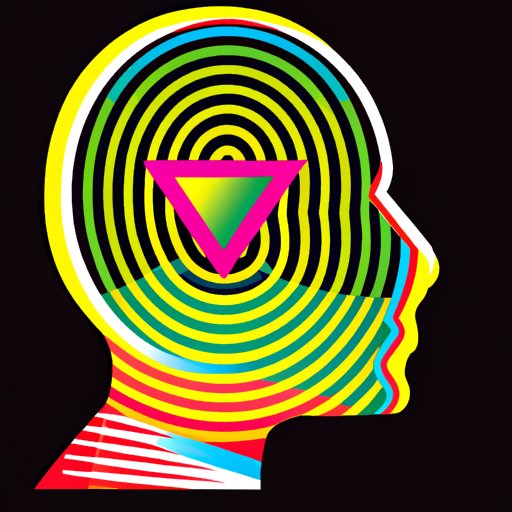I. Introduction
The term ‘conspiracy theory’ has become increasingly popular over the years. Conspiracy theorists believe that certain events or situations are the results of a secret plot or scheme by a group of people. Conspiracy theories have become deeply ingrained in contemporary culture and have infiltrated mainstream media, politics, and even popular culture. It is vital to have an understanding of conspiracy theories because of the increasing impact they have on society.
II. Unveiling the Mystery: A Comprehensive Guide to Understanding Conspiracy Theories
In simple terms, a conspiracy theory is a theory that an event or situation has come about as a result of a secret, often sinister, plot by a group of people. Conspiracy theories have a few common characteristics, such as being complex, having simplistic explanations, often involving prominent people or groups, and lacking evidence.
There are different types of conspiracy theories, ranging from political, social, economic, and even personal conspiracy theories. The most popular ones include claims about the Illuminati controlling the world, 9/11 conspiracy theories, and UFO sightings.
III. Exploring the Fascinating World of Conspiracy Theories: What They Are, How TheyWork, and Why People Believe in Them
Psychologists and researchers have explored various reasons why people believe in conspiracy theories. Some factors include the need for control, fear of the unknown, and a lack of trust in institutions. Cultural and societal factors such as the rise of social media, the decline of mainstream news sources, and widespread mistrust of authority also contribute to the rise of conspiracy theories. Confirmation bias and cognitive dissonance also play a significant role in the acceptance of conspiracy theories.
IV. Behind the Scenes: The Psychology of Conspiracy Theories and How They Shape Our Perception of Reality
Conspiracy theories often involve confirmation bias and cognitive dissonance, which leads people to accept any evidence that supports their beliefs while rejecting those that contradict it. Conspiracy theories tend to influence people’s perception of reality and can lead to a distrust that extends beyond the specific areas of conspiracy theories. Conspiracy theories can also cause harm as they promote false information affecting public health and safety, as seen in anti-vaccination campaigns or the idea that Covid-19 is a hoax.
V. From Flat Earth to Deep State: A Brief History of Conspiracy Theories and Their Impact on Society
Conspiracy theories have been part of society since ancient times. They have been used by governments to mislead subjects, but also by individuals seeking to expose what they believe to be the truth behind a particular event or situation. Conspiracy theories have significantly impacted society, politics, and culture. For example, the idea of the Illuminati has infiltrated popular culture. The Black Lives Matter movement has been co-opted with claims of being a George Soros-backed plot to destabilize the US government.

VI. Separating Fact from Fiction: The Truth About Conspiracy Theories and How to Spot a False One
It is vital to differentiate between true and false conspiracy theories. False conspiracy theories often lack evidence, are not based on facts, or have a grand narrative. A good example of a false conspiracy theory would be the idea that the 5G network spreads Covid-19. This type of theory lacks medical evidence and relies on confusing causation with correlation.
VII. Beyond the Headlines: A Critical Analysis of Conspiracy Theories and Their Relationship to Politics and Power
Conspiracy theories have often been used as a political tool to gain and maintain power. For example, the myth that Barack Obama was born outside the US was supported and spread by Donald Trump. Conspiracy theories also have a close relationship with power dynamics, in that they usually stem from a profound mistrust of authority or the dominant group. Conspiracy theories can be dangerous in a democratic society as they have the potential to create an alternate reality, where truth and facts have no significance.
VIII. Breaking Down the Conspiracy Mindset: How to Engage with Conspiracy Theorists and Why It Matters
It is essential to engage with conspiracy theorists in a productive manner. Sometimes, people believe in conspiracy theories because they feel that their voices are not being heard. Communicating with them to understand their perspective is essential. Critical thinking can be promoted by challenging their beliefs by asking them questions and presenting facts that contradict their conspiracy theory. It’s important to understand that even to the point of disproving a conspiracy theory; patience and empathy should not be lost.
IX. Conclusion
Conspiracy theories have become increasingly prevalent in recent times. People believe in them due to various reasons such as fears, a lack of trust in institutions, and societal and cultural factors. It is crucial to be aware of what conspiracy theories are and why people believe in them. Understanding conspiracy theories can help us differentiate between truth and lies, and ultimately regain control over our reality. It’s crucial to engage with those who believe in conspiracy theories, but it’s equally essential to be empathetic and promote critical thinking.
